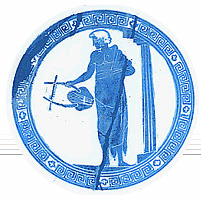TEST
4
Answers CLASSICAL
ERA
MUSIC
27 A FERRARA
Fill In
1. Which of the following was not
an important element of the
Enlightenment:
___a.
humanism ___b. the rise of the middle
class and with it universal
betterment ___c. absolute monarchs
___d. the pursuit of happiness
2. When compared to the music of the Baroque
period, which of the following statements is not true of Viennese Classical music.
___a. Variety and
flexibility were introduced into dynamics.
___b. Compared to the basic Baroque orchestra, the
basic Classical
orchestra
had more instruments.
___c. Viennese Classical music is polyphonic in
texture and uses tempo rubato.
___d. Compared to Baroque themes, Viennese
Classical themes tend to
be more tuneful.
3. Which of the following statements is true:
___a. By the time the Viennese Classical style had
fully evolved,
polyphony had once again become the
main texture used by
composers.
___b. Polyphony was rejected completely by the
composers of the
Classical
era and consequently never used.
___c. Viennese Classical composers used a
significant amount of
monophony
in their music.
___d. Compared to Baroque composers, Viennese Classical composers
employed polyphony in their music
only occasionally and usually in the development
section of a sonata form
movement.
4. The Classical period flourished in music
during the years____________.
5. Which of the following statements should not be associated with the
Classical
period:
___a. Emphasis on balance and clarity of
structure
___b. The evolution of the standard orchestra
comprised of four sections
___c. The basso continuo was the foundation of the
instrumental ensemble.
___d. The Age of Enlightenment
6. Which of the following composers is not
considered a master of the
Classical
period:
___a.
Johann Sebastian Bach ___b. Wolfgang A.
Mozart
___c.
Ludwig van Beethoven ___c. Franz Joseph
Haydn
7. Which of the following is not part of a sonata
form movement:
___a.
recapitulation ___b. rondo ___c. exposition ___d. development
8. Short musical ideas or fragments of themes
that are often developed
within
a composition are called________________.
9.
In sonata form, a modulatory section that leads from one theme to the
next is called_____________
10. The
psychological climax of sonata form
appears when the tonic returns at
the_____________
___a. exposition
___b. development ___c.
___d. coda
11
In sonata form the contrasting key is established by the statement
of____________.
12.
In sonata form, the section that features the most tension and drama
through
modulation, sequence, polyphonic treatment and motivic inter-
play
is called:
13.
The finale section of a movement in a classical symphony, which rounds it off
with
vigorous
closing cadences, is called_______________.
14. Which form is a common characteristic of the
second movement of a symphony?
15.
The form called
theme and variations may be schematically outlined as_____________.
16.
Each
successive variation in a theme with variations what aspect of the theme cannot
be varied?
17.
The minuet
and trio movement of a classical symphony, string quartet or other work is
diagrammed___________________.
18.
The form
known as minuet and trio is employed as the __________movement in a classical
symphony, string quartet or other work.
19.
The rondo
may be schematically outlined as________________.
20.
Because of
its liveliness, regularity, and buoyancy, the rondo most often serves as which
movement in a classical symphony, string quartet or other work?
21.
The return
of the main theme in rondo form is usually:
___a.
a contrasting melody ___b. much like
its first appearance
___c.
slow and dignified ___d. in varied
form
22. What
describes the tempo plan of the typical Classical symphony?
23, A
highly lyrical song like section sung by a soloist mulling over his or her
thoughts and feelings during an opera is called________________.
24.
The
operatic way of dramatic portrayal of dialogue is called____________.
25.
An operatic
number sung by two or more people is called an____________.
26.
Music for a
small ensemble of two to about ten players with one player per part performed in
a small rooms is called_________________.
27.
A string
quartet consists of_________________.
28.
Which of
the following statements not true
of a Classical solo concerto?
___a. There are usually two main soloists
___b. The solo writing tends to be quite virtuosic
(highly skilled)
___c. Mozart used double exposition form for the
first movements
of his solo concertos
__d. A solo concerto typically has three
movements
29.
By the
age seven Mozart could:
___a.
read music perfectly at first sight
___b.
improvise fugues and compose minuets
___c.
play the harpsichord (and eventually the piano) and the violin
___d.
all of the above
30.
Which of
the following Italian operatic masterpieces was written by
Mozart?
___a.
Don Giovanni ___b. Rigoletto ___c. Madame Butterfly
___d.
Tristan and Isolde
31.
The
instrument that Mozart played and that he wrote many concertos
for was_____________.
32.
Which describes
the relationship between the soloist and the orchestra in the Classical
concerto?
__a.
the soloist’s part never played alone.
__b.
the orchestral parts were more important.
__c.
the woodwinds parts were more important.
__d.
the soloist and orchestra were equally balanced in importance.
33.
The form
for the first movement of a concerto is called ______________.
34.
Italian
comic opera was called_____________.
35.
The four
main types of cadences in classical music are__________________.
36.
An open cadence
stops on the dominant and therefore conveys the feeling of:
a.
stability and final closing
b.
surprise
c.
tension and a desire to resolve to the tonic
d.
a momentary re-direction and a movement toward a new harmonic area
37.
A deceptive
cadence stops avoids the dominant and tonic and therefore conveys the feeling
of:
a.
stability and final closing
b.
surprise
c.
tension and a desire to resolve to the tonic
d. a momentary re-direction and a movement toward a new harmonic area
Answers



